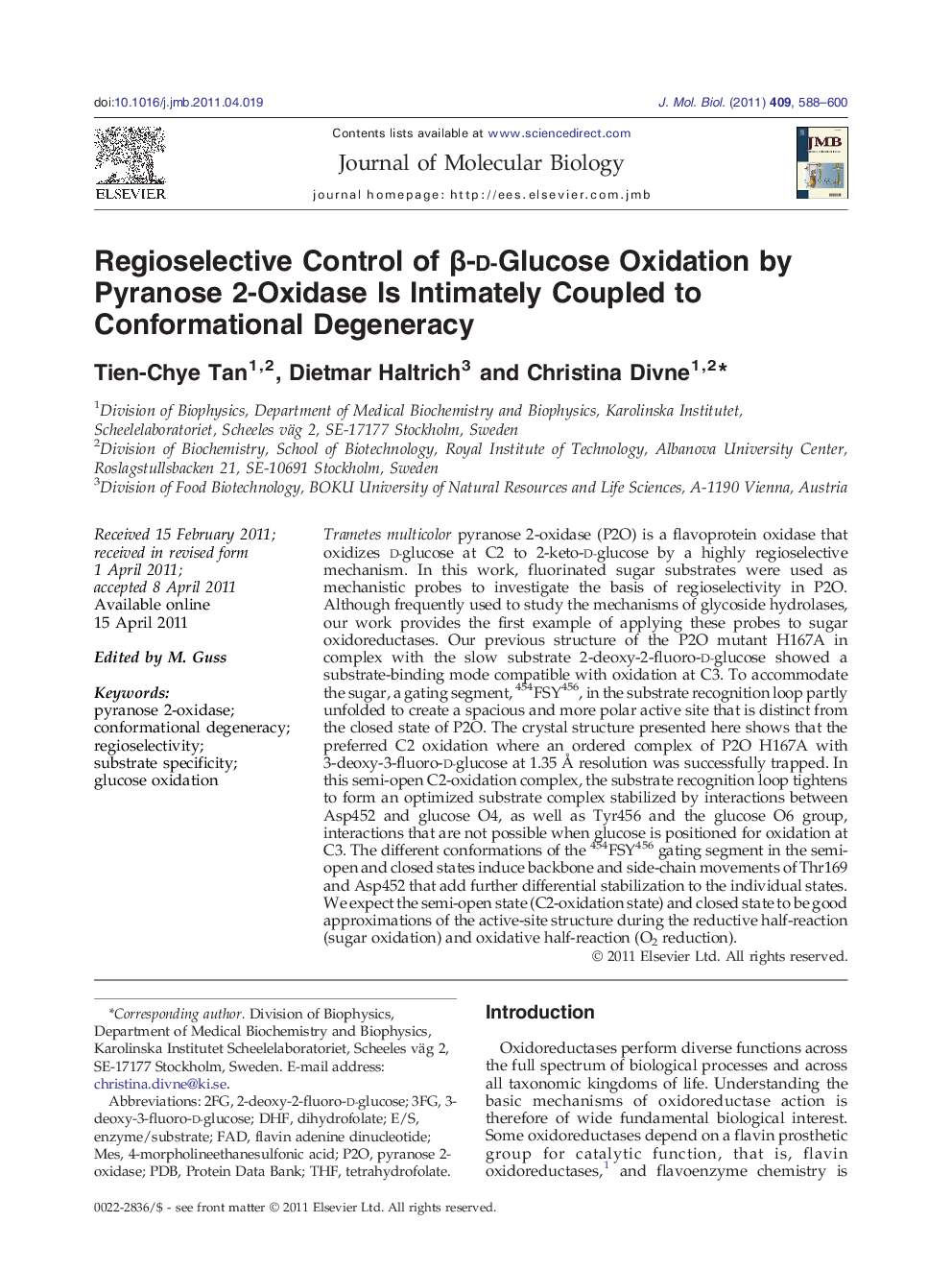| Article ID | Journal | Published Year | Pages | File Type |
|---|---|---|---|---|
| 2185354 | Journal of Molecular Biology | 2011 | 13 Pages |
Trametes multicolor pyranose 2-oxidase (P2O) is a flavoprotein oxidase that oxidizes d-glucose at C2 to 2-keto-d-glucose by a highly regioselective mechanism. In this work, fluorinated sugar substrates were used as mechanistic probes to investigate the basis of regioselectivity in P2O. Although frequently used to study the mechanisms of glycoside hydrolases, our work provides the first example of applying these probes to sugar oxidoreductases. Our previous structure of the P2O mutant H167A in complex with the slow substrate 2-deoxy-2-fluoro-d-glucose showed a substrate-binding mode compatible with oxidation at C3. To accommodate the sugar, a gating segment, 454FSY456, in the substrate recognition loop partly unfolded to create a spacious and more polar active site that is distinct from the closed state of P2O. The crystal structure presented here shows that the preferred C2 oxidation where an ordered complex of P2O H167A with 3-deoxy-3-fluoro-d-glucose at 1.35 Å resolution was successfully trapped. In this semi-open C2-oxidation complex, the substrate recognition loop tightens to form an optimized substrate complex stabilized by interactions between Asp452 and glucose O4, as well as Tyr456 and the glucose O6 group, interactions that are not possible when glucose is positioned for oxidation at C3. The different conformations of the 454FSY456 gating segment in the semi-open and closed states induce backbone and side-chain movements of Thr169 and Asp452 that add further differential stabilization to the individual states. We expect the semi-open state (C2-oxidation state) and closed state to be good approximations of the active-site structure during the reductive half-reaction (sugar oxidation) and oxidative half-reaction (O2 reduction).
Graphical AbstractFigure optionsDownload full-size imageDownload high-quality image (226 K)Download as PowerPoint slideResearch HighlightsThe mechanism of regioselectivity in P2O elucidated. ► Fluorinated glucoses used to investigate regioselectivity are shown. ► The active-site loop rearranges into an optimized substrate complex for oxidation at C2.► Tyr456 and Asp452 are discriminating determinants in regioselectivity. ► Thr169 and Asp452 couple the conformational state to flavin redox state.
